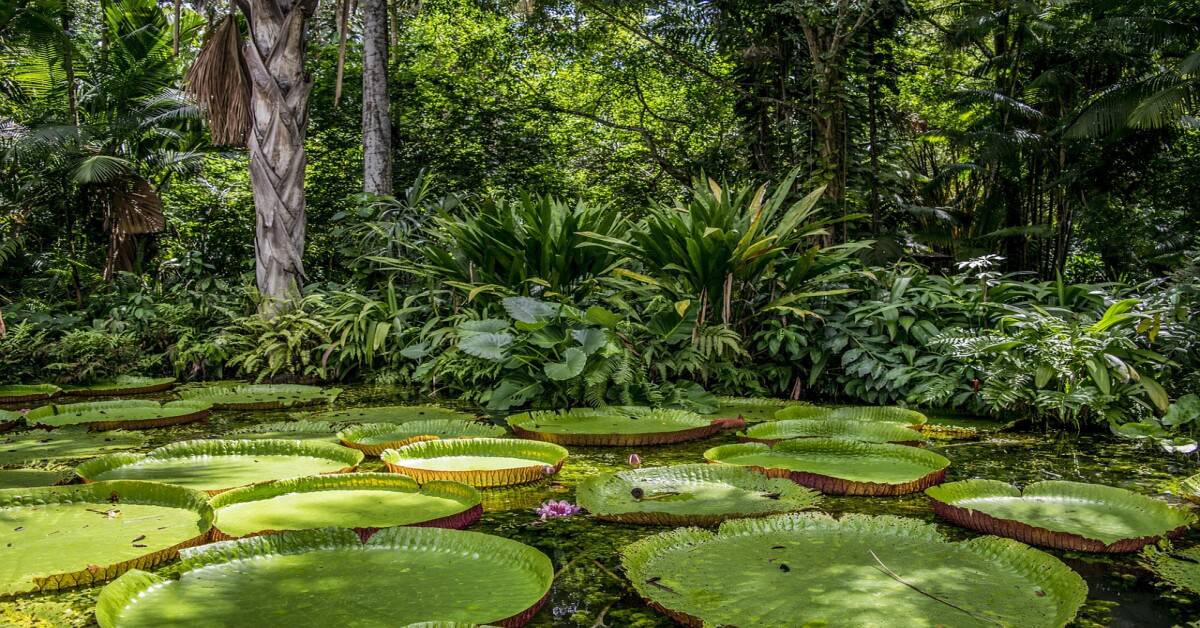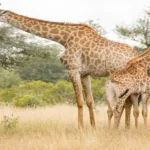The Amazon Forest is a vast and vibrant ecosystem, renowned for its immense size and unparalleled biodiversity. Spanning over 6.7 million square kilometers, it hosts an incredible variety of plant and animal species.
This lush forest is often called the “lungs of the Earth” due to its vital role in producing oxygen and regulating the global climate.
Home to millions of species, the Amazon’s biodiversity is unmatched. From towering trees to colorful parrots, the forest is a treasure trove of life. Each layer, from the forest floor to the canopy, teems with unique organisms, many still undiscovered.
This blog post aims to provide a comprehensive look at the Amazon Forest’s size and biodiversity. By exploring its vast dimensions and rich life forms, we hope to highlight the importance of preserving this vital ecosystem.
Overview of the Amazon Forest
The Amazon Forest, also known as the Amazon Rainforest, is located in South America. It covers about 40% of the continent and spans eight countries: Brazil, Peru, Colombia, Venezuela, Ecuador, Bolivia, Guyana, and Suriname, as well as French Guiana, an overseas territory of France.
The majority of the forest lies within Brazil, making it the largest tropical rainforest in the world.
The Amazon has a rich history of exploration and discovery. Indigenous peoples have lived in the region for thousands of years, with deep knowledge of the forest’s resources and biodiversity.
European explorers, including Francisco de Orellana, ventured into the Amazon in the 16th century, leading to its name after fierce encounters with indigenous warrior women resembling the Amazons of Greek mythology.
Historically, the Amazon has been crucial for scientific research and biodiversity studies. The forest has fascinated botanists, zoologists, and ecologists who have documented its vast array of species.
It continues to be a critical area for studying climate change and ecological interactions. This overview highlights the Amazon Forest’s significance in geography, history, and science, underscoring its importance on a global scale.
Size of the Amazon Forest
The Amazon Forest spans an impressive area of approximately 2.58 million square miles (6.7 million square kilometers). This vast expanse makes it the largest tropical rainforest in the world.
The forest’s size is crucial for sustaining its rich biodiversity and plays a significant role in global climate regulation.
When compared to other large forests, the Amazon’s size is unmatched. The Congo Rainforest, the second-largest tropical forest, covers about 780,000 square miles (2 million square kilometers).
The Amazon is also larger than the next two biggest rainforests combined, highlighting its immense scale and importance. Its size contributes to its role as a major carbon sink and a home to countless species.
However, the size of the Amazon Forest has been decreasing over time due to deforestation and other human activities. Since the 1970s, large areas have been cleared for agriculture, logging, and mining. Deforestation rates have fluctuated, with some years seeing significant losses.
Conservation efforts and stricter regulations have helped reduce the rate of deforestation in recent years, but challenges remain. The forest’s size continues to change, impacting its biodiversity and the global environment.
Biodiversity of the Amazon Rainforest
Biodiversity refers to the variety of life forms in a particular habitat or ecosystem. It includes different species of plants, animals, and microorganisms. High biodiversity is crucial because it ensures ecosystem stability and resilience, provides resources for food, medicine, and raw materials, and maintains ecological processes.
The Amazon Forest is a prime example of rich biodiversity, making it an essential area for global environmental health. The forest is home to an incredible variety of plant species. It houses over 40,000 different plant types, many of which are found nowhere else on Earth.
Examples include the towering kapok tree, which can grow over 200 feet tall, and the coca plant, known for its medicinal properties. These plants not only support the forest’s animal life but also play a critical role in global oxygen production.
Animal species in the Amazon are equally diverse. The forest is home to about 2.5 million insect species, thousands of birds, and over 400 mammal species. Iconic examples include the jaguar, the Amazon river dolphin, and the harpy eagle.
Each of these species plays a unique role in the ecosystem, contributing to its overall health and functionality. The diversity of animal life also attracts scientists and researchers from around the world, eager to study and preserve these unique creatures.
The Amazon’s unique ecosystems and habitats further enhance its biodiversity. The forest contains various ecosystems, such as rainforests, floodplain forests, and savannas. Each habitat supports different life forms adapted to its conditions.
For instance, the flooded forests, known as varzea, host unique fish species and aquatic plants. Meanwhile, the terra firme, or non-flooded forests, are rich in terrestrial animals and trees.
These diverse habitats create a complex and interdependent web of life, highlighting the Amazon’s ecological richness and importance.
Also Read: Great Indian Bustard Sanctuary: Biodiversity and Significance
Key Species of the Amazon Forest
The Amazon Forest is home to many notable plant species, including towering trees and medicinal plants. The Brazil nut tree and the rubber tree are two of the most significant.
The Brazil nut tree provides valuable nuts and is crucial for the forest’s ecosystem. The rubber tree, historically important for its latex, supports local economies.
Additionally, medicinal plants like the coca plant and the cinchona tree, the latter known for producing quinine, an anti-malarial drug, highlight the Amazon’s vital role in global health.
Among the iconic animal species in the Amazon, the jaguar, sloth, and Amazon river dolphin stand out. Jaguars, the largest predators in South America, play a key role in maintaining the balance of the ecosystem.
Sloths, known for their slow movements, are well-adapted to life in the trees. The pink Amazon river dolphin, one of the few freshwater dolphins in the world, adds to the region’s uniqueness.
These animals not only contribute to the forest’s biodiversity but also attract significant scientific interest and ecotourism.
However, many species in the Amazon are endangered or threatened. The giant otter, the Amazonian manatee, and various bird species face habitat loss due to deforestation. The harpy eagle, one of the world’s largest and most powerful eagles, is also at risk.
Conservation efforts are crucial to protect these species and their habitats. Ensuring their survival is vital for maintaining the Amazon’s ecological balance and biodiversity.
Human Impact on the Amazon Forest
Human activities have significantly impacted the Amazon Forest, primarily through deforestation. Agriculture is the leading cause, with vast areas cleared for cattle ranching and soybean farming.
Logging, both legal and illegal, further contributes to forest loss. Mining for minerals like gold also devastates large tracts of land. These activities strip the forest of its trees and disrupt the natural balance.
The consequences of deforestation are severe for both biodiversity and the climate. As forests disappear, countless plant and animal species lose their habitats, pushing many toward extinction.
The loss of trees also reduces the forest’s capacity to absorb carbon dioxide, exacerbating global warming. Additionally, deforestation affects local weather patterns, potentially leading to more extreme weather events.
Indigenous communities play a crucial role in conserving the Amazon. These groups have lived sustainably in the forest for centuries, using their deep knowledge to manage resources responsibly.
Many indigenous communities actively protect their lands from deforestation and other harmful activities. Their involvement in conservation efforts is essential, as they offer valuable insights and practices that help preserve the forest.
Recognizing and supporting their rights and initiatives is vital for the Amazon’s future.
Conservation Efforts to Preserve Amazon Forest
Conservation efforts in the Amazon Forest include both international and local initiatives. Organizations like the World Wildlife Fund (WWF) and Greenpeace work to protect the forest through various programs.
They focus on preserving biodiversity, preventing deforestation, and supporting sustainable development. Local governments and indigenous groups also play vital roles, implementing policies and practices to safeguard their lands.
There have been notable success stories, such as the establishment of protected areas and reserves. Brazil’s Amazon Region Protected Areas Program has significantly reduced deforestation in certain regions.
However, challenges remain, including illegal logging, mining, and insufficient enforcement of environmental laws. Balancing economic development with conservation is a constant struggle, requiring ongoing commitment and innovation.
Individuals can contribute to conservation efforts in several ways. Supporting organizations that protect the Amazon through donations or volunteer work is impactful. Making sustainable choices, such as reducing meat consumption and avoiding products linked to deforestation, helps too.
Raising awareness and advocating for policies that protect the forest are also essential actions. Everyone can play a part in preserving the Amazon for future generations.
The Future of the Amazon Rainforest
The future of the Amazon Forest is uncertain, with predictions and scenarios based on current trends painting a mixed picture. If deforestation continues at the present rate, large portions of the forest could be lost in the next few decades.
This loss would lead to significant biodiversity decline and disrupt vital ecological services. However, increased conservation efforts and sustainable practices could slow or even reverse these trends.
Climate change poses a severe threat to the Amazon Forest. Rising temperatures and altered rainfall patterns can stress the ecosystem, making it more vulnerable to fires and disease.
The forest’s ability to act as a carbon sink may diminish, exacerbating global warming. Additionally, changes in the Amazon can affect weather patterns worldwide, demonstrating the forest’s critical role in the Earth’s climate system.
Continued research and monitoring are essential for the Amazon’s future. Understanding the complex interactions within the forest helps create effective conservation strategies.
Long-term studies track changes in biodiversity, climate impacts, and the effectiveness of conservation efforts. Investing in research ensures that we have the knowledge needed to protect this vital ecosystem and address the challenges it faces.
Conclusion
The Amazon Forest, with its immense size and unparalleled biodiversity, is crucial for global ecological health. It faces threats from deforestation, climate change, and human activities.
Protecting this vast ecosystem is vital for preserving its rich plant and animal life and maintaining its role in climate regulation.
The significance of the Amazon cannot be overstated. Its biodiversity supports countless species and provides essential resources. Conserving this forest is not just about preserving a natural wonder but ensuring a stable climate and a balanced ecosystem for future generations.
We all have a role in protecting the Amazon. Support conservation organizations, make sustainable choices, and raise awareness about the forest’s plight. Together, we can help safeguard this invaluable treasure.






